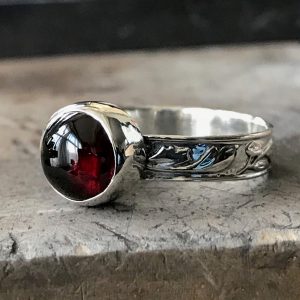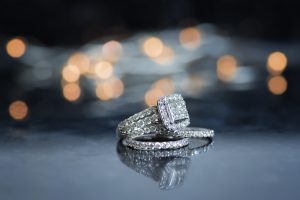Engagement Ring Guide
Although weddings have been off the cards recently, many couples have grown closer and some have started to think about getting engaged. And of course, the first port of call is the engagement ring.
But with so many different types of engagement rings on the market, the process can get pretty complicated, pretty quickly. And that’s where we step in. We’ve created the ultimate engagement ring guide, covering all things from metal types and styles to gemstones and settings. So whether you’re buying or designing your own, it’s worth taking a look at the latest trends so you don’t miss out.
Different trends and types of engagement rings
Expanding your service offering? Want to learn more about the different types of engagement rings? We’ve got a rundown on the sorts of things you’ll need to take into account when designing or choosing an engagement ring.
Setting
If you’re a newbie when it comes to jewellery, you might not be familiar with ‘settings’. To put it simply, the setting is the way that the gemstone is incorporated into the ring. Generally speaking, there are eight types of stone settings for you to consider as both a designer or customer:
- Channel setting. This is great if you’re after a ring with a sleek finish, without having to compromise on glamour. In this setting, small gemstones are wrapped around the entire ring so that they are flush with the outside edge, creating a smooth effect.
- Claw setting. An iconic look for an engagement ring, a claw setting is perfect for using with a larger gemstone as it helps the light reflect through it and enhance the sparkle further!
- Grain setting. Similar to channel setting, the grain setting makes the ring look as if it has been diamond encrusted.
- Pavé setting. This setting can be used on its own to add a subtle touch of sparkle to a simple engagement ring, or used to complement the main gemstone used in the design.
- Illusion setting. Considered the most popular setting for engagement rings, the clue’s in the name with this one – giving off the impression that the stone is a much larger size than it is. Win-win!
- Bezel setting. A much simpler, more traditional design, the bezel setting is great if you’re looking to achieve a vintage effect with your engagement ring.
- Tension setting. A more advanced stone setting, this one makes it look as though the stone is suspended in the air. Ideal if you’re looking for something a little more unique.
- Flush setting. In the same way that the channel setting creates a sleek look, the flush setting is a great way to include a selection of gemstones in your ring without looking too flashy or obvious.
Metal Types
Next up, metal types. There are so many more options than your classic gold and silver, and we’ll talk you through them below:
- The most affordable metal to use in an engagement ring, silver is a classic choice at a lower price. Although, silver is less durable than some of the more expensive options as it is a much softer metal.
- Yellow gold. Once considered the most popular metal used for engagement rings, yellow gold is ideal if you want that retro, yet classic, feel to your ring. Plus, the gold means that it is durable and easy to maintain.
- White gold. A much more modern metal type for engagement rings, white gold offers that perfect balance between warmth and sophistication. White gold is still incredibly popular for engagement rings so as a jeweller looking to expand your offering, it might be worth picking up some more of this particular alloy in advance. Discover our collection of 18ct white gold sheet metal to get you started.
- Rose gold. A unique element to an engagement ring, rose gold metal is young, on-trend and something a little different. Plus it’s great for mixing with other types of metal jewellery.
- Finally, platinum engagement rings are on the rise due to their robust yet stylish finish, which ensures that any gemstones used will be kept snug in their settings. What’s more, platinum rings are easy to maintain as they can be cleaned simply by letting them rest in warm, soapy water for 30 minutes or so.
Gemstones
 The next aspect you’ll need to consider when choosing between the different types of engagement rings, is the gemstone. Discover our top 5 gemstones for engagement rings to help get the ball rolling.
The next aspect you’ll need to consider when choosing between the different types of engagement rings, is the gemstone. Discover our top 5 gemstones for engagement rings to help get the ball rolling.
- Sapphire. Ideal for a bold pop of colour and exceptional durability, sapphires have remained a popular choice for engagement rings. This is largely due to the fact that it is instantly recognisable but also one of the hardest gemstones (that isn’t a diamond) on the Mohs Hardness Scale.
- Ruby. Much like sapphire, ruby is an equally popular choice when it comes to engagement rings, due to the fact that it is so long-lasting, without the price tag of a diamond.
- Emerald. Symbolising love and new beginnings, emeralds are a romantic and unique choice for an engagement ring when you want to add a splash of colour.
- Opal. Alluring and eye catching, opals are quickly becoming a popular choice for the more unusual engagement rings. However, it is a much softer stone so is not suitable for everyday wear.
- Diamonds. Arguably the most sought-after gemstone on an engagement ring, we have diamonds. Simple, yet oh so chic, you simply can’t go wrong with a diamond engagement ring.
Profiles
The final part to discover is the profile of the ring (the shape of the metal itself), which is another factor both buyers and designers will have to consider. Here’s a rundown of the most common engagement ring profiles:
- A long-term classic, the court profile is still yet to go out of fashion. This profile features a domed exterior alongside a rounded interior, making it comfortable for everyday wear without compromising on quality.
- D-shaped. Another popular option is the D-shaped ring. The key benefits of this profile are its comfort, substantiality plus the fact that it’s one of the least likely profiles to snag.
- A modern classic, a flat engagement ring is particularly sought after by men. So if you’re looking to create a chunkier, more masculine look – opt for a ring with a flat profile.
- Delicate, versatile and timeless – the halo ring profile is still very popular with women and it’s super simple for jewellery designers to create.
- Flat court. Like the classic court profile but with a flat exterior, this is a great unisex option for engagement rings. Substantial in size without reducing the level of comfort – you can’t go wrong!
And we’re done! Now equipped with all the knowledge on how to pick out an engagement ring, it’s time for you to get thinking. And if you get stuck, come back to our engagement ring guide to rejog your memory. If you’re a jeweller and thinking of giving it a go yourself, make sure to pick up all the jewellery making supplies you need at Cooksongold.
The post Engagement Ring Guide appeared first on The Bench.
source https://www.cooksongold.com/blog/beginners-guides/engagement-ring-guide

Comments
Post a Comment